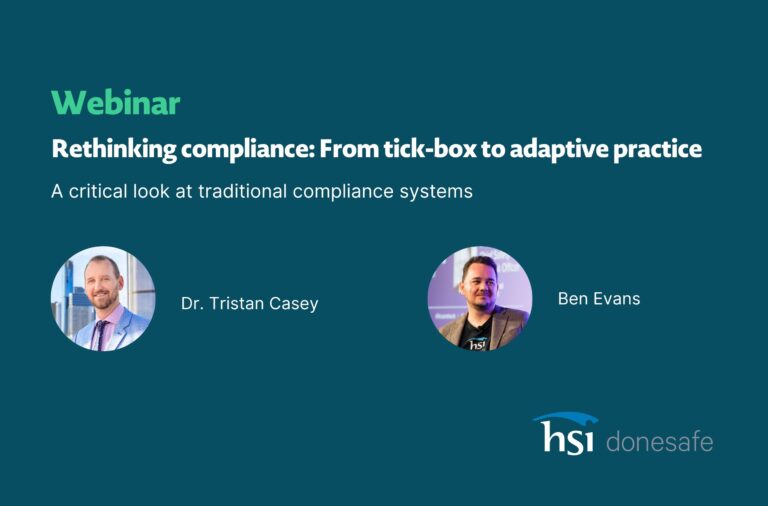
The Need for Unified EHS Solutions
Keeping up with changing health and safety regulations isn’t easy. Yet, as a safety leader it falls on your shoulders to stay compliant, engage staff, manage multiple programs, reports and expectations.
But one thing is clear: relying on a collection of disconnected systems, spreadsheets, and manual processes is no longer enough to keep up. The Global EHS Readiness Report (GERI) revealed a startling statistic—84% of organisations still haven’t adopted a unified EHS platform. That means the vast majority of EHS leaders are still juggling multiple point solutions, which creates inefficiencies, increases risk, and makes it harder to improve safety outcomes.
With so many safety-related tasks to manage, from incident reporting to compliance tracking to training, it’s essential to have all your EHS activities in one integrated system. A unified EHS platform simplifies your operations, reduces data silos, and improves overall visibility across your organisation. But too many organisations are still using outdated, disconnected systems that make it hard to get a clear picture of their EHS performance.
The Case for a Single, Integrated Platform
So, why is a unified EHS platform so important? The key is simplicity. With a single system that connects all your EHS activities, you can streamline workflows, improve data accuracy, and create a more proactive EHS program. When your tools and data are connected, you get a comprehensive, real-time view of your entire EHS ecosystem—allowing you to make better decisions and take action faster.
A unified platform also reduces the risk of human error. When data is manually entered into different systems, it’s easy for mistakes to happen. These errors can lead to safety hazards, compliance failures, or missed opportunities for improvement. By consolidating everything into one platform, you eliminate the risk of inconsistencies and ensure that your team always has access to up-to-date, accurate data.
The Challenges of Disconnected Systems
The GERI report highlights the problems that arise from using disconnected systems. For example, 47% of EHS leaders said that managing multiple systems was their biggest challenge. When systems don’t communicate with each other, you end up with fragmented data, delayed reporting, and slower response times. This makes it difficult to track safety incidents, monitor compliance, and manage risks in real time.
Additionally, having to use several different tools for various EHS activities increases complexity. You need to train employees on multiple systems, track multiple sets of data, and struggle to integrate everything into a cohesive picture. The result is a slower, less efficient EHS program that can’t respond quickly to new risks or changes in regulations.
How HSI Donesafe Helps You Become Future-Ready
HSI Donesafe provides the solution to these challenges. With our unified platform, you can manage all your EHS activities in one place—from incident reporting to audits to compliance management. This integration saves time, reduces complexity, and improves the efficiency of your program. Everything is connected, allowing you to track performance, identify trends, and act on data quickly.
Our platform is also scalable and flexible, so it grows with your organisation. Whether you’re a small business or a large enterprise, HSI Donesafe can be customised to meet your specific needs and help you adapt to changes in the EHS landscape.
The Bottom Line: Simplify and Strengthen Your EHS Program
If your organisation is still relying on disconnected tools and manual processes, it’s time to make a change. A unified EHS platform like HSI Donesafe is the key to improving your safety outcomes, reducing risk, and preparing your program for the future. With one integrated system, you’ll have real-time data, streamlined workflows, and enhanced visibility into your entire EHS program.
The future of EHS is connected, proactive, and data-driven. By adopting a unified platform, you can ensure that your program is ready for whatever comes next.
———————————————————————————————————————————————————–
Is making sure your organisation is ready for all future risks important to you? Talk to us today.
Keep your team safe with HSI Donesafe.
Chat with us today.
Share:



